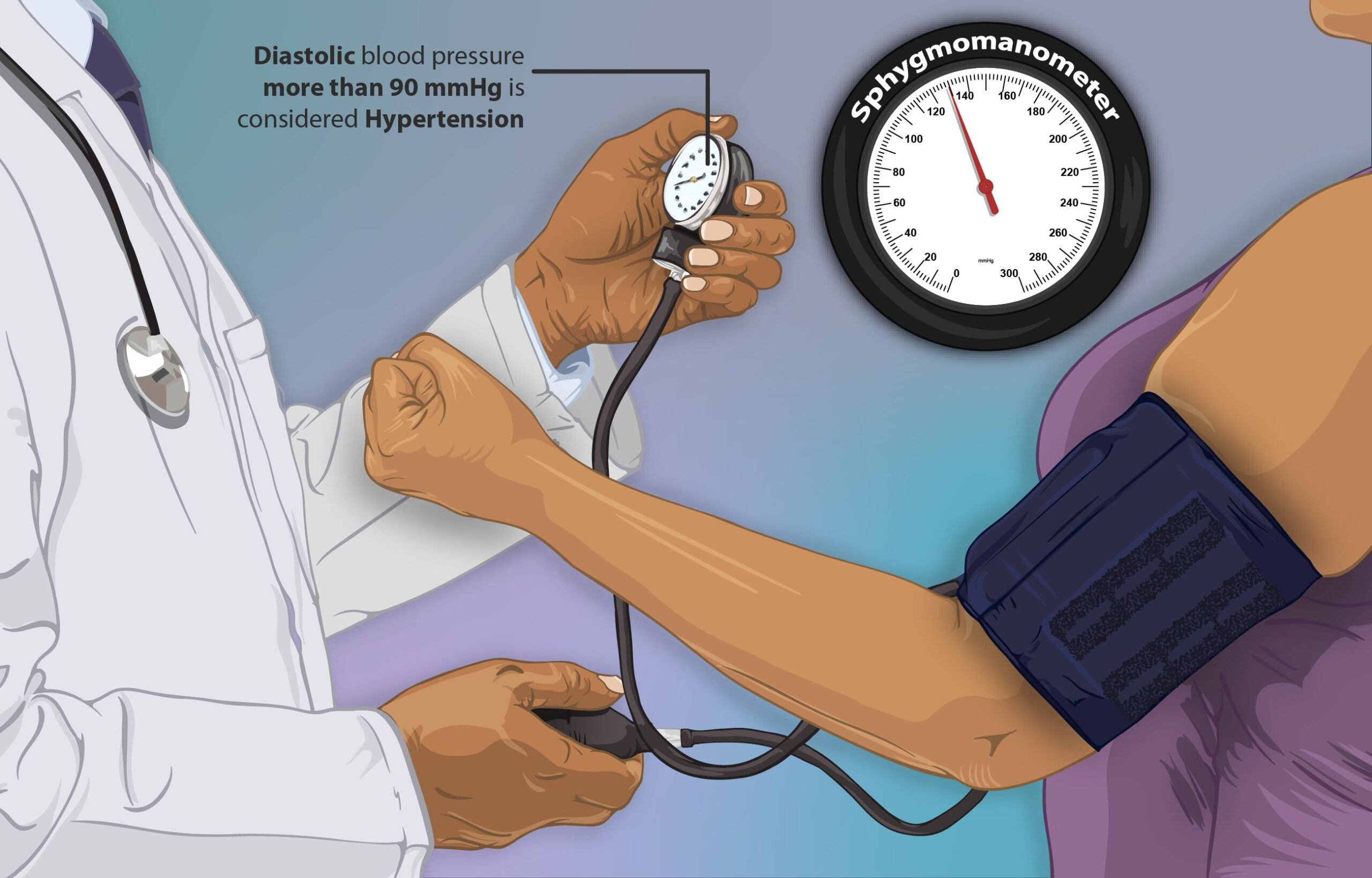
When it comes to the complex landscape of heart disease, the leading cause of death in the U.S., there’s a duality of news we must confront: both challenging realities and empowering opportunities. While certain risk factors, like family history or socio-economic conditions affecting access to healthy food and housing, lie beyond our immediate control, a significant portion of our heart health destiny rests firmly within our daily choices. These are the habits we cultivate, often without realizing their profound, cumulative impact.
Indeed, the journey to a healthier heart isn’t always about grand, sweeping gestures. Often, it’s about identifying and recalibrating the seemingly small, innocuous routines that, over time, quietly erode our cardiovascular resilience. As Sabra Lewsey, M.D., a cardiologist and assistant professor of medicine at Johns Hopkins Medicine, wisely states, “Lifestyle changes are difficult for everyone. But they are profoundly important and can make lifesaving gains in your health.” It’s in these subtle shifts that the most significant transformations begin.
This in-depth exploration aims to unmask ten such everyday habits that could be silently jeopardizing your heart health. We’ll delve into the scientific explanations behind their detrimental effects, examine how quickly their harm can manifest, discuss whether the damage is reversible, and, most importantly, provide actionable insights to help you cultivate a more heart-healthy lifestyle. Understanding these quiet saboteurs is the first crucial step toward taking proactive control of your most vital organ.

1. **General Inactivity (The Couch Potato Habit)**Not moving enough, particularly on a regular and consistent basis, poses a significant, multifaceted risk to overall health, extending far beyond just the cardiovascular system. Inactivity has been directly linked to concerning issues such as cognitive decline, increased frailty, and, perhaps most alarmingly, an elevated risk of premature death. This underscores the broad systemic impact of a sedentary lifestyle, making it a critical area for intervention.
Fortunately, the path to countering this habit doesn’t demand immediate, strenuous athletic feats. Almost any form of activity that gently elevates your heart rate is an excellent starting point, making it accessible to individuals at all fitness levels. Quentin Youmans, M.D., assistant professor of medicine at the Northwestern University Feinberg School of Medicine, wisely advises, “You don’t have to go from doing nothing to running marathons.” The most impactful change, he notes, comes simply “from doing nothing to doing something,” emphasizing that dedicating yourself to *some* activity daily is the most crucial initial step.
The Physical Activity Guidelines for Americans, established by the U.S. Department of Health and Human Services (HHS), recommend accumulating at least 150 minutes of moderate-intensity activity weekly, alongside twice-weekly strength training sessions. While this may sound like a substantial commitment, it’s vital to remember that these minutes don’t need to be completed all at once. As long as your heart rate is elevated for 15 minutes or more at a time, each session contributes positively to your weekly goal, making it easier to integrate into a busy schedule.
Furthermore, the definition of “activity” is wonderfully broad and inclusive; it isn’t confined solely to structured workouts like gym classes or bike rides. Everyday tasks such as gardening, grocery shopping, walking your dog, or even cleaning your home can effectively elevate your heart rate and count towards your activity goals. A recent study published in the European Journal of Preventive Cardiology reinforced the power of these small steps, finding that increasing daily activity by just 1,000 steps – roughly 10 minutes of walking – was associated with a remarkable 15 percent reduction in dying from any cause, while an increase of 500 steps was linked to a 7 percent reduction in dying from cardiovascular disease. These findings powerfully illustrate that even modest increases in movement can yield profound, life-extending benefits.

2. **Drinking Too Much Alcohol (Immediate Cardiac Impacts)**Many individuals might not immediately recognize the profound and often insidious connection between alcohol consumption and the health of their heart. However, medical experts like Dr. Youmans are clear: drinking too much alcohol can have direct and detrimental effects on your cardiovascular system. These impacts include a potential rise in blood pressure, the unsettling occurrence of irregular heartbeats, and even a direct toxic effect on the delicate heart muscle itself, compromising its ability to function optimally.
The consequences of excessive imbibing can escalate to severe heart conditions over time. As Amber Johnson, M.D., a cardiologist and assistant professor of medicine at the University of Pittsburgh School of Medicine, explains, consuming too much alcohol “can lead to heart failure or a weakening of the heart.” This weakening can progressively impair the heart’s ability to pump blood efficiently, leading to a cascade of health problems and significantly diminishing quality of life.
Understanding what constitutes “too much” alcohol is crucial, yet it’s a question with evolving and often stringent answers. The World Health Organization, in a significant 2023 statement, clarified its stance, declaring unequivocally that “no alcohol is the safest amount” when it comes to overall health risks. This emphasizes a global recognition of alcohol’s pervasive harms, even at seemingly low levels, and challenges conventional views on moderate drinking.
For those who do choose to consume alcohol, the recommended limits in the U.S. provide a framework for harm reduction, though they are not an encouragement to drink. These guidelines suggest consuming up to one drink per day for women and up to two drinks per day for men. Adhering to these limits is an important step in mitigating the immediate cardiac risks associated with alcohol, helping to protect the heart from the acute impacts of excessive intake.

3. **Failing to Brush or Floss Your Teeth (Oral Health and Heart Disease)**The seemingly mundane habits of daily brushing and flossing are far more critical to your overall health than simply maintaining a bright smile; they hold a surprising and significant link to your cardiovascular well-being. The core reason lies in the inflammatory processes initiated by poor oral hygiene. Inflammation, generally speaking, is a known risk factor for cardiovascular disease throughout the body. When you neglect to brush and floss regularly, your gums can become inflamed, a condition known as gingivitis or periodontitis, which in turn elevates levels of vessel-narrowing C-reactive protein in your bloodstream, a potent marker of systemic inflammation.
Beyond inflammation, poor oral health creates an unwelcome gateway for harmful bacteria. Germs residing in an unhealthy mouth can easily enter the bloodstream, where they pose a direct threat to your cardiovascular system. Once in the circulation, these bacteria can cling to fatty deposits already present in blood vessels, contributing to the progression of atherosclerosis—the hardening and narrowing of arteries. This insidious process quietly builds over time, often without immediate symptoms. The deterioration of health due to untreated periodontal disease is not an overnight phenomenon; it “can take months to years” to manifest significant harm, potentially requiring invasive surgery to repair the damage.
The good news is that the damage caused by poor oral hygiene can often be undone, or at least significantly mitigated, with proactive measures. Regular dental care is paramount in this regard. Dr. Giridhar Vedala, a cardiologist at Memorial Hermann Medical Group, strongly recommends seeing a dentist every six months for thorough cleanings and comprehensive exams. These routine visits are essential for addressing existing issues, removing plaque and tartar buildup, and preventing the progression of gum disease that could affect your heart.
Crucially, the daily commitment to oral hygiene remains the frontline defense. The action items are straightforward and effective: dedicate two minutes to thoroughly brush your teeth, ensuring all surfaces are cleaned, and make flossing at least once daily an indispensable part of your routine. These consistent, small efforts not only safeguard your oral health but also play a vital, often underestimated, role in protecting your heart from the silent threat of inflammation and bacterial invasion.

4. **Avoiding Regular Health Checkups (Missing Crucial Warning Signs)**Many of us are guilty of postponing or entirely skipping regular health checkups, perhaps hoping that ignored health problems will simply resolve themselves. However, this approach is a perilous gamble, especially concerning heart health. Ignoring the body’s subtle or overt warning signs doesn’t make them disappear; instead, it allows potential cardiovascular issues to progress unnoticed and untreated. Regular medical evaluations are indispensable for identifying early indicators of heart disease, such as elevated blood pressure, unhealthy cholesterol levels, and high hemoglobin A1C, which is a tell-tale sign of diabetes.
By proactively addressing these warning signs, you empower yourself to intercept conditions before they escalate into devastating events. Regular checkups can literally help “prevent devastating heart attacks or strokes,” safeguarding your future well-being. The urgency of these visits is underscored by the fact that cardiovascular disease isn’t exclusively an ailment of advanced age; Dr. Vedala highlights that it “can strike as early as in your 40s (and sometimes earlier),” making early detection and intervention critical for all adults.
To champion proactive health, Dr. Vedala advocates a powerful and memorable mantra for his patients: “#KnowYourNumbers.” This collective pitch emphasizes the importance of being intimately familiar with your personal blood pressure readings, cholesterol levels (both LDL and HDL), and hemoglobin A1C. He explains that if you develop issues, knowing your baseline numbers allows you to understand how far you’ve drifted and provides a clear target to “go back to what you were doing at an earlier age for better results,” thereby guiding lifestyle adjustments or medical interventions.
Implementing this knowledge requires consistent action. You should aim to get a comprehensive checkup with blood work at least once in your 20s, then proceed with checks every four to six years before age 40, and transition to annual checkups thereafter. These recommendations evolve with age, but your physician will guide you. For instance, if your blood pressure consistently falls within the 130-139 mm Hg for the upper number (systolic) or 80-89 mm Hg for the lower number (diastolic), a physician is likely to recommend lifestyle modifications or blood pressure-cutting medications. This is particularly relevant given that, according to the latest American Heart Association data, a staggering “Half of adults have hypertension.”
Further guidelines include maintaining A1C levels between 5.7% to 8% and striving for LDL (or “bad”) cholesterol below 100. Goals for HDL (good) cholesterol and triglycerides are individualized based on other heart risks. For individuals with a family history of diabetes but stable blood sugar, doctors might suggest A1C checks twice yearly. It’s also important to note that guidelines typically relax slightly after age 70, with blood pressure targets adjusting to 150/90 mm Hg and an ideal Hemoglobin A1C of 8.0, reflecting the changing physiological landscape of aging. These regular checkups are not just appointments; they are crucial investments in a longer, healthier, and more vibrant life.

5. **Not Eating Enough Fruits and Vegetables**The absence of adequate fruits and vegetables in our diets is a quiet but potent threat to heart health, often overlooked in the daily rush. These nutritional powerhouses are rich in stomach-filling fiber yet remarkably low in calories. Prioritizing their consumption can naturally lead to healthier weight management and a beneficial drop in detrimental cholesterol levels, both critical factors in preventing cardiovascular disease. The fiber helps regulate digestion and satiety, making it easier to maintain a healthy body mass.
Beyond their caloric and fiber benefits, fruits and vegetables are teeming with antioxidants. These vital compounds play a crucial role in curbing free radicals, which are unstable molecules that can cause oxidative stress and damage to cells throughout the body. This damage, if unchecked, can lead to the hardening of arteries, a process known as atherosclerosis, and accelerate the overall aging process. By providing a rich supply of antioxidants, a diet abundant in plant-based foods effectively acts as a shield for your cardiovascular system.
The deterioration of health due to insufficient fruit and vegetable intake often takes years to become visibly apparent, making it a silent saboteur. However, the good news is that the perks of increasing your intake can be seen in a matter of months. A committed effort to incorporate more of these health-boosters can begin to reverse some of the damage. For instance, the chances of developing cancer, experiencing heart-injuring inflammation, or suffering a heart attack or stroke can recede significantly with even a modest 10- to 20-pound weight drop, often facilitated by a diet rich in produce.
For most individuals, it’s almost impossible to overdo the consumption of these beneficial foods. Their nutrient density and low-calorie count make them ideal for nearly any diet. However, for individuals managing diabetes, a nuanced approach is necessary. Diabetics should consult their doctor, a registered dietitian, or another healthcare provider to determine if they should avoid certain sugar-rich fruits that could potentially spike blood sugar levels. This tailored advice ensures that the benefits of fruits are reaped without compromising blood sugar control.
Read more about: Seriously, What Happened? 12 Once-Beloved Foods Americans Just Don’t Eat Anymore (And Why We Kinda Miss ‘Em)

6. **Being Sedentary (Structured Physical Activity and Weight Management)**While we previously addressed general inactivity, a distinct yet equally critical habit threatening heart health is a broader sedentary lifestyle that lacks structured physical activity and proactive weight management. Engaging in cardiovascular activity is not merely about burning calories; it fundamentally improves heart function by strengthening the heart muscle and enhancing its efficiency. This improved function is a cornerstone of a healthy cardiovascular system, allowing the heart to pump blood more effectively with less effort.
Crucially, regular physical activity is a powerful tool for weight management. Being overweight, regardless of other factors, exposes individuals to a cascade of health risks, including diabetes, high blood pressure, and chronic inflammation. All of these conditions, in turn, accelerate the hardening of the arteries, an insidious process that can ultimately lead to devastating heart attacks and strokes. By staying active and maintaining a healthy weight, you directly mitigate these interconnected hazards, fortifying your body against cardiovascular disease.
The insidious damage from a sedentary lifestyle may not become visible for years, often progressing silently until symptoms become undeniable. However, the remarkable news is that the benefits of becoming active can manifest quite rapidly. Within just a week of initiating regular physical activity, blood sugar levels, hypertension, and other vital blood markers may show significant improvements. Dr. Sanjay Maniar, a cardiologist affiliated with Memorial Hermann Heart & Vascular Institute – Southwest, has observed profound transformations, stating, “I’ve seen patients on heart medications who were able to get off all medications when they lost weight. Once their weight was under control, they no longer needed them.” This powerfully illustrates the direct and often reversible impact of weight management through activity.
The American Heart Association provides clear recommendations for structured physical activity, suggesting 30 to 45 minutes of walking, running, or other workouts, five times a week. Yet, it’s important to remember that perfection isn’t required to reap significant benefits. Even a modest commitment, like walking just three miles a week, can lead to a 10% reduction in cardiovascular disease risk. Upping that to walking 30 minutes a day brings a substantial 20% reduction. If you can manage to run just one hour per week, you could cut the chance of heart disease by an impressive 40%.
Dr. Vedala emphasizes that “It’s never too late” to start; even if you don’t begin exercising until after age 40, you can still improve your chances of a healthy cardiovascular system by 55%. He advises, “Any exercise is better than no exercise – always. Any increased activity will be good for you. And trying to make it regular will make it even more beneficial.” Importantly, activities you might do anyway, such as yard work and gardening, count toward these goals. Even choosing to golf without a cart can contribute to your weekly activity target.

7. **Eating Too Much Salt**The pervasive presence of excessive sodium in the modern diet is a silent danger, contributing significantly to heart disease. The primary mechanism is straightforward: too much sodium causes your body to retain more water, which directly hikes your blood pressure. With the average American consuming approximately 3,400 mg of salt per day—about 50% more than the recommended maximum of 2,300 mg—this habit is widespread and deeply ingrained in our eating patterns.
A significant portion of this excess salt is hidden in processed, prepackaged, and restaurant foods, making it challenging for consumers to monitor their intake without careful attention. Dr. Vedala highlights the need to actively reduce dietary salt or, in some cases, consider medications that help excrete salt through urine. A simple, often overlooked indicator of fluid retention due to high sodium intake is a ring feeling a little tight on your finger, a subtle sign your body is holding onto more fluids than it should.
The harm to your heart from excessive salt is typically a lifelong process, not an overnight phenomenon, with effects directly related to high blood pressure often becoming visible within a few years. However, the good news is that if you make a conscious effort to slash your salt intake, improvements can be surprisingly quick. Your blood pressure can respond positively within as little as six weeks of lowering sodium consumption, demonstrating the body’s remarkable capacity for recovery when given the right conditions.
To actively combat this habit, it is crucial to start checking ingredients labels for salt content on all food products. Be especially wary of processed foods and those served at restaurants, as these are often major culprits. Fast foods, fatty foods, fried foods, and various meats can be laden with salt, as can common items like soups, frozen dinners, bread, pizza, and even tomato sauce for pasta. Trimming these high-sodium items from your diet can significantly improve your chances of living a longer, healthier life. Regularly monitoring your blood pressure at home is also an easy yet powerful tool in this preventative strategy.
The American Heart Association recommends a daily sodium intake of only 1,500 to 2,300 mg. To put this into perspective, one teaspoon of granulated salt contains approximately 2,325 mg, which means your entire daily limit could be met by just a single teaspoon. This stark visualization underscores how effortlessly we can exceed healthy limits and the importance of mindful eating to safeguard our heart health.
Read more about: Your Ultimate NYC Foodie Bucket List: 14 Must-Visit Restaurants That Are Absolutely Slaying the Culinary Scene!

8. **Smoking**Smoking stands as one of the most profoundly harmful habits an individual can inflict upon their body, with devastating consequences for the heart. As Dr. Maniar unequivocally states, “Smoking is one of the most harmful things people can do to themselves.” The act of smoking immediately constricts blood vessels, causing a critical drop in blood flow and slashing the oxygen supply that fuels the heart. To compensate for this deprivation, the heart is forced to work much harder, leading to a spike in blood pressure, heart rate, and an erratic rhythm. Over time, this constant strain results in hardened and narrowed arteries and increases the risk of dangerous blood clots, all hallmarks of cardiovascular disease.
Simultaneously, the body’s internal defense system—inflammatory markers such as C-reactive protein—goes into overdrive, attacking the dangerous intruders like tar, nicotine, and other carcinogens present in tobacco smoke. This chronic inflammatory state further exacerbates damage to blood vessels and contributes to the progression of atherosclerosis, creating a vicious cycle of harm that silently erodes heart health. The comprehensive assault smoking wages on the cardiovascular system makes it a top priority for cessation.
The speed at which smoking deteriorates health is alarmingly swift. Within just 30 minutes of lighting a single cigarette, blood flow to the heart is significantly reduced, forcing the heart to labor harder. The danger isn’t limited to active smokers; even exposure to second-hand smoke can inflict substantial harm on the heart, underscoring the broad public health impact of this habit. The pervasive and immediate nature of its harm makes smoking a particularly urgent habit to break.
While the damage caused by smoking is severe, the body possesses a remarkable capacity for healing once the habit is stopped. Within two years of quitting, the threat of heart attacks and stroke begins to recede. After a decade, the threat of lung cancer is halved, offering a powerful incentive for long-term cessation. Furthermore, after 15 years, significant improvements in heart function can be observed, highlighting the long-term benefits of quitting. However, it is a sobering fact that, as Dr. Maniar notes, “there’s no way to recover damaged lung tissue,” emphasizing that some damage, once done, is irreversible.
When it comes to smoking, there is absolutely no safe level of exposure. This includes second-hand smoke, which carries its own significant risks to cardiovascular health for those exposed. The unequivocal message from medical professionals is clear: for the sake of your heart and overall well-being, complete abstinence from smoking in any form is the only safe and recommended path.
Read more about: Beyond the Flames: 13 Barbecue Myths Pitmasters Want You to Stop Believing for Safer, Tastier Grilling
Embracing these insights and integrating them into your daily life is not just about avoiding disease; it’s about reclaiming vitality and extending the vibrant years of your life. Every small, conscious choice to prioritize heart health contributes to a stronger, more resilient you. From filling your plate with colorful produce to lacing up your shoes for a brisk walk, or simply making thoughtful decisions about alcohol and sodium, these actions are profound investments. Take control, #KnowYourNumbers, and champion a future where your heart beats with enduring strength and health. Your most vital organ deserves nothing less.



